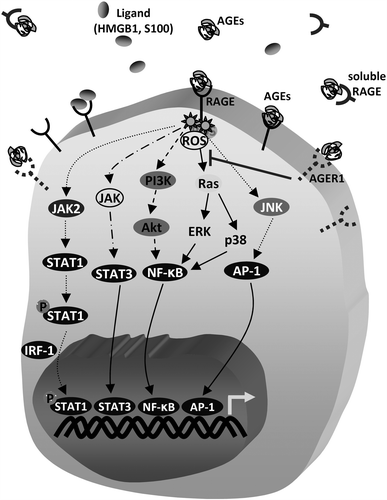Figures & data
Figure 1. Main signalling pathways known to be induced by AGEs binding to RAGE; other RAGE binding ligands include HMGB1 and S100 proteins. At gene expression level, inflammatory responses are mostly mediated by the transcription factors STAT3, NF-κB and Activator Protein 1 (AP-1), although AGEs may also activate Insulin Receptor, TGF-β, VEGF and FOXO1 signalling (not shown here). Additionally, binding of AGEs on RAGE activates JAK2 which induces the phosphorylation of STAT1. Then, homodimerised phosphorylated STAT1, together with IFN regulatory factor-1 (IRF-1), binds to genomic regions of target genes. In a counteracting effect, binding of AGEs to AGER1, or to soluble forms of RAGE suppresses oxidative stress, Ras signalling and inflammation.
